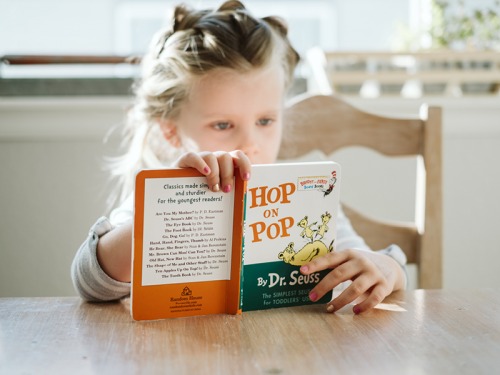Five Ways to Get Your Child Interested in Reading

The benefits of developing a love of reading are well documented, but how do you actually do that in your family? What if you’re not a big reader yourself? Where do you even begin?
1. BABY TALK
Little ones are never too young to enjoy a story. Get some cushions and blankets and make a comfy area to read. Let your little one see your face as you’re reading, over exaggerating your pronunciation of the words, this will help develop their speech and language. Also use the book as a prop – it can be a butterfly or a bird or even a tunnel for a train!
2. LET THEM CHOOSE
It might mean you know the words to the same three books off by heart, but letting your child really get involved in choosing the book at storytime makes it an experience rather than just reading some words together. Be it visiting your local library, independent bookshop or the toy box in their room, make it an adventure! And believe it or not repetition is key in helping development, so a classic nursery rhyme collection with lots of choice could really work.

3. PICTURE THIS
Picture books are also a great starting point. Brightly-coloured pictures are ideal for capturing a child’s imagination as well as supporting the reader. Using those pictures and illustrations is the perfect way to extend learning – pointing out the colours and shapes, asking them what they see and encouraging them to makes links to world around them.
4. …AND ACTION!
As your children get older they may find it hard to sit still and listen to a story, and that’s absolutely fine! There are so many amazing things to look at, pick up, even climb! Find a story that matches their energy by getting them to move around like the characters in the book! Stomp like an elephant, swim like a fish or roar like a lion! Using props can also help capture their imagination, like turning a cardboard box into a space rocket and blasting off into space!
5. ‘I WONDER…?’
Ask questions! ‘Can you see the little mouse? Where are they hiding? I wonder what a mouse has for breakfast?’ Or ask them what their favourite part of the story was; what would they have done if they were the main character; what did they enjoy in the story? Open-ended questions are a great way to extend learning and vocabulary.
Pick up that book, you won’t regret it.
sevenstories.org.uk










